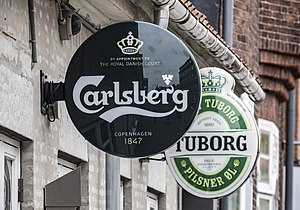
Albani Bryggerierne A/S is a brewery located in Odense, Denmark, and the vast majority of its customers live on the island of Funen. The brewery was founded by MPharm Theodor Schiøtz in 1859. In 2000, the brewery merged with Bryggerigruppen with the Brewery group, a group of Danish regional breweries.

Carlsberg A/S is a Danish multinational brewer. Founded in 1847 by J. C. Jacobsen, the company's headquarters is in Copenhagen, Denmark. Since Jacobsen's death in 1887, the majority owner of the company has been the Carlsberg Foundation. The company's flagship brand is Carlsberg. Other brands include Tuborg, Kronenbourg, Somersby cider, Holsten, Neptun, Belgian Grimbergen, Fix, one of Greece's oldest brands and more than 500 local beers. The company employs around 41,000 people, primarily in Europe and Asia. Carlsberg is currently the 6th largest brewery in the world based on revenue.

Pale lager is a pale-to-golden lager beer with a well-attenuated body and a varying degree of noble hop bitterness.

Holsten Brewery is a brewing company founded in 1879 in what is now Hamburg's Altona-Nord quarter. The group now has seven breweries in Germany. Its nationally distributed premium brand is the pale lager Holsten Pilsener. The company was acquired by the Carlsberg Group in 2004.
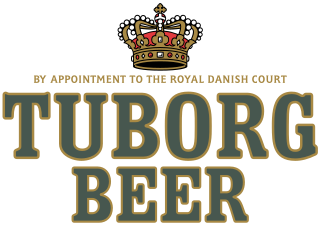
Tuborg is a Danish brewing company founded in 1873 on a harbour in Hellerup, to the north of Copenhagen, Denmark. Since 1970 it has been part of the Carlsberg Group. The brewery's flagship, the Tuborg pilsner, was brewed for the first time in 1880.
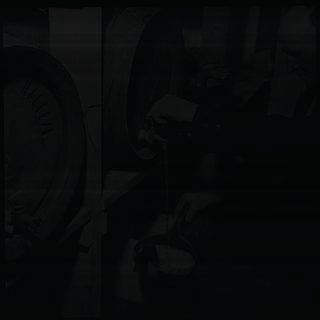
Beer in Norway has a long history, stretching back more than a millennium. Until some 200 years ago, most farms where it was possible to grow grain south of the Arctic Circle, brewed their own beer. From the early 20th century brewing was industrialized and home brewing was restricted. Significant consolidation in the brewing sector reduced the number of major breweries to just a handful. With the exception of the farmhouse ales, most beer styles brewed in Norway trace their ancestry to central Europe.
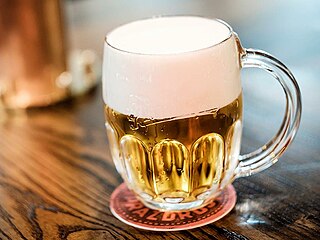
Beer has a long history in what is now the Czech Republic, with brewing taking place in Břevnov Monastery in 993. The city of Brno had the right to brew beer from the 12th century, while Plzeň and České Budějovice, had breweries in the 13th century.
Beer in Africa, especially lager, is produced commercially in most African countries, and indigenous people also make varieties of beer. Beer is served in various locales, from neighbourhood shebeens to upscale bars. Many countries have standardized beer bottle sizes, which are cleaned and re-used, so when buying beer at a store, people often must pay a deposit on the bottle and the price of the beer. An alternative to glass-bottle beers is local beer sold in tetra-pak style paper cartons.
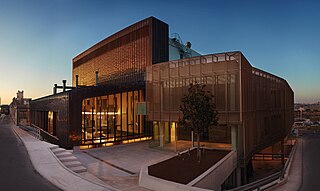
Simonds Farsons Cisk plc, commonly known as Farsons, is a Maltese food and beverage conglomerate whose businesses include brewing, sale and distribution of beer and soft drinks; importation, wholesale and retail of food and beverages; operation of franchised food retailers; and property development.
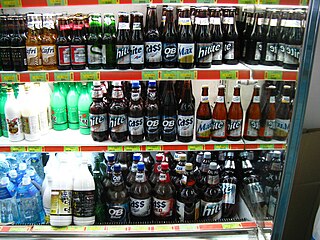
Beer, called maekju in Korean, was first introduced to Korea in the early 20th century. Seoul's first brewery opened in 1908. Two current major breweries date back to the 1930s. The third brewery established in Korea, Jinro Coors Brewery, was founded in the 1990s. It was later acquired by Oriental Breweries (OB). Hite Breweries's former name was Chosun Breweries, which was established in 1933. The company changed its name to Hite Breweries in 1998. OB Breweries established as Showa Kirin Breweries in 1933. The company changed its name to OB Breweries in 1995.
Beer is a very popular alcoholic beverage in Turkey. Commonly, lager type beers are popular.

Oriental Brewery or OB is a South Korean brewery currently owned by AB InBev, and initially founded by Doosan Group.
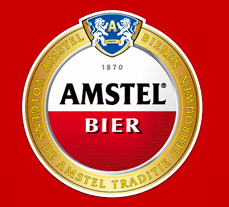
Amstel Brewery is a Dutch brewery founded in 1870 on the Mauritskade in Amsterdam. It was taken over by Heineken International in 1968, and the brewing plant closed down in 1982, with production moving to the main Heineken plant at Zoeterwoude.

Jacobsen is an upscale brand of specialty beers owned by Carlsberg. Named after Carlsberg's founder, J.C. Jacobsen, it is housed in the original Carlsberg brewery in Valby in Copenhagen, Denmark and is currently headed by Head Brewer Chris Thurgeson.

The beers of the Caribbean are unique to each island in the region, although many are variants of the same style. Each island generally brews its own unique pale lager, the occasional stout, and often a non-alcoholic malta beverage. Contract-brewing of international beers is also common, with Heineken Pilsener and Guinness Foreign Extra Stout being the most popular. The beers vary between the islands to suit the taste and the brewing method used.
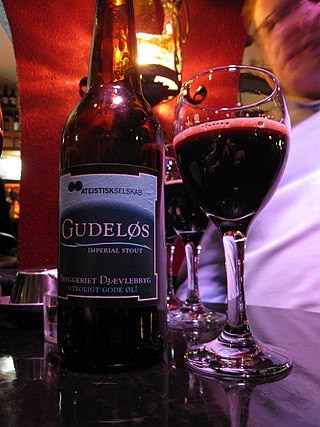
Bryggeriet Djævlebryg is a Danish microbrewery established in June 2006. The brewery is a so-called phantom brewery and brews its beers at Herslev Bryghus near Roskilde. From 2006–2009 the beers were brewed at Brøckhouse in Hillerød.
Bryggeriet Vestfyen A/S is a Danish beverage company established in 1885.

Fuglsang is a danish brewery situated in the town of Haderslev in Southern Jutland. In 2021 the company was bought by Royal Unibrew and in 2022 they ceased production at the Haderslev plant. Instead the brewing was moved to Faxe and Odense.
Lion Brewery or Lion Brewery (Ceylon) PLC is a predominantly Sri Lankan owned and operated brewery. The company is listed on the Colombo Stock Exchange and its stock is part of the S&P Sri Lanka 20 Index. Lion Brewery produces the highest selling beer, Lion Lager, in both Sri Lanka and the Maldives.

Viru Brewery was Estonia's third largest brewery, and produced the Wiru, Puls, Žiguli and various other brands. It was located in Haljala in Lääne-Viru County. Production of beer was discontinued in 2020.
